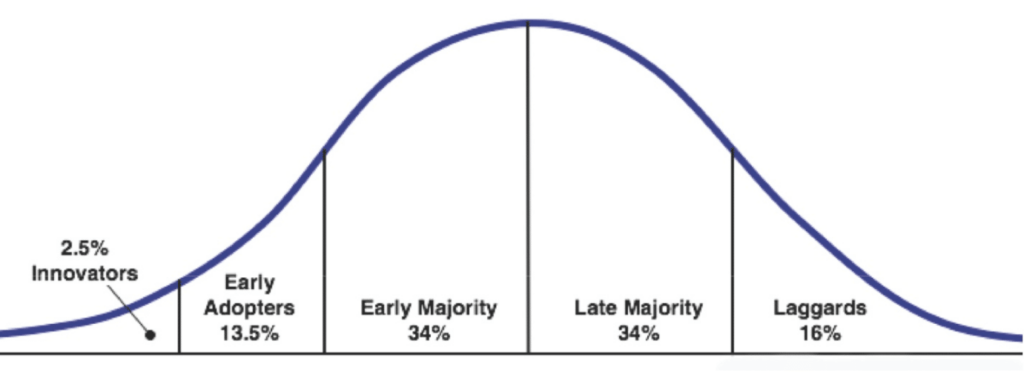
The WordPress community has moved along a challenging curve since the release of WordPress 5.0 and the Gutenberg Block Editor in December 2018. The adoption of the Block Editor, and the acceptance of a Gutenberg-powered WordPress as our new normal, is moving along that familiar statistical bell curve: the Technology Adoption Life Cycle. We’re comfortably in the peak of the curve, with the majority of the community having accepted the Block Editor.
This didn’t seem a foregone conclusion even later last year, when it was still mostly the Innovators and Early Adopters (as the model refers to them) that were comfortable with the change. But curves can grow fast, and the community has worked hard to support, adapt, and expand product lines in response to the new normal.
The Late Adopters
Tensions have calmed since 2018 and early 2019, when headlines like Is Gutenberg the end or a new beginning for WordPress? and WordPress ‘Gutenberg’ release causes frustration, backlash among existing users were common. Still, there is a passionate niche within the WordPress community that hasn’t yet adopted the Block Editor. Part of the way the community is supporting users on that end of the curve is through extending the support timeline for the Classic Editor plugin into 2022.
While the Classic Editor notoriously outshines the Gutenberg plugin in its star ratings and reviewer devotion, we reached an interesting milestone around April 1. The daily download trendline for the Classic Editor finally dipped below the 15,000 downloads mark, while the same trendline for the Gutenberg plugin climbed above the 15,000 threshold.


The Majority
The Block Editor has reached majority status. As WordPress.org helpfully sums it up, “Gutenberg is more than an editor. It’s also the foundation that’ll revolutionize customization and site building in WordPress.” January brought us news of the growing ubiquity of the Block Editor, with Automattic’s announcement of support for it on mobile devices.
Joost de Valk, founder of Yoast, showed us in March how WordPress leaders are adapting their thinking when he bluntly broke down the state of play in The WordPress block editor: Why you should be using it. He lays out the stakes clearly: “The Gutenberg project and with it, the block editor is literally where all the innovation in the WordPress space is happening. Think of it this way: the only car race you’re going to win by using old technology, is a classic car race. If you want to win in SEO in the next few years, I guarantee you’ll need to be on the block editor. If you’re not, and if some of your competitors are, they’re going to beat you.”
The Innovators
The early adopters of Gutenberg continue to champion its strengths, imagine future possibilities, and expand the resources and tools they offer to ease the whole community through the transition. They’ve gone into the trenches with the Block Editor and emerged with ideas. Developers, themers, content creators, power users, project managers, site directors, and/or business leaders – they’ve had their own learning curve as they expand their offerings.
Developer and writer Justin Tadlock reflected on the risks and opportunities the Block Editor brings for themers in his widely-discussed post Rebirth of Creativity: Gutenberg and the Future of WordPress Themes. What he concludes holds important lessons for the WordPress community as a whole: “There’s still a long road ahead. Theme authors need to be more involved with the development of Gutenberg as these features make their way into the plugin and eventually into WordPress. Otherwise, they’ll risk losing the opportunity to help shape the future theme landscape.”
The new generation of WordPress users will only have ever known a normal where WordPress is built on the Block Editor. We are on the downhill ride into a healthy emerging ecosystem of well-supported, adapted, and expanded resources and tools.









